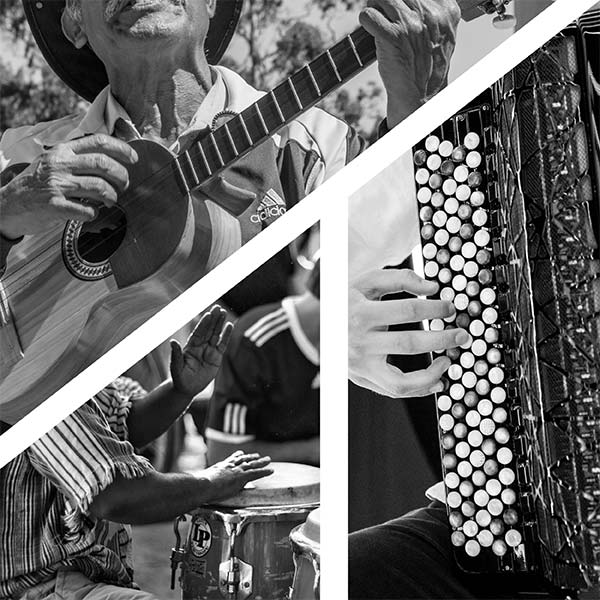Subtotal: $
Checkout-

Does Political Music Change Anything?
-

Adventures in Americanaland
-

Music, Memory, and Alzheimer’s
-

Why We Make Music
-

Doing Bach Badly
-

Dolly Parton Is Magnificent
-

Go Tell It on the Mountain
-

Reading the Comments
-

In the Aztec Flower Paradise
-

The Strange Love of a Strange God
-

Is Congregational Singing Dead?
-

In Search of Eternity
-

Violas in Sing Sing
-

Hosting a Hootenanny
-

How to Lullaby
-

How to Raise Musical Children
-

How to Make Music Accessible
-

Chanting Psalms in the Dark
-

The Fiery Spirit of Song
-

The Harmony of the World
-

The Tapestry of Sound
-

Let Brotherly Love Remain
-

Take Up Your Cross Daily
-

The Bones of Memory
-

Poem: “Sunrise and Swag”
-

Poem: “Poland, 1985”
-

Church Bells of England
-

Editors’ Picks: Walk with Me
-

Editors’ Picks: Shakeshafte
-

Editors’ Picks: The Least of Us
-

Letters from Readers
-

Celtic Christianity on Iona
-

The Catherine Project
-

Mercedes Sosa
-

Covering the Cover: Why We Make Music
-

Music and Morals
-

The Death and Life of Christian Hardcore

Next Article:
Explore Other Articles:
It was the church that baptized me, but my family remembers that day for an earthly trinity. That evening, after I had been dunked in the baptismal font, we all gathered on the patio of my grandfather’s house in San Diego, near Valledupar, to celebrate in the company of three hired musicians. Leandro Díaz sang several of his own songs (“when Matilde walks, even the savannah smiles”); while Toño Salas, the younger brother of legend Emiliano Zuleta (“tell Toño, my brother Toño, that he’s a chicken, ah, and I’m a rooster”), played the accordion. Beneath the palms of Rodolfo Castilla the thump of the caja drum resounded. He was the son of another acclaimed cajero, Cirino Castilla, who had died mid-performance during a concert at the Vallenato Legend Festival.
It was 1977 and my first vallenato celebration on our native soil of Valledupar was also our last. A few months later, along with thousands of other migrants, my family headed for Venezuela.
We brought many things on the journey, including music. Neatly packed records by the Zuleta Brothers, Jorge Oñate, Diomedes Díaz, Binomio de Oro. I remember spending many a childhood evening sitting by the record player, studying those album covers as I wondered who these famous, smiling men were, dressed in colorful shirts and surrounded by accordions. In my family, music was the oxygen that allowed us to survive homesickness and the rope which, for decades, kept us tied to a distant harbor in Colombia.
Vallenato, born of diaspora and integration, has always been a wandering genre, just as the instruments used to perform it have also wandered far and wide. Félix Carrillo Hinojosa is a Bogota-based researcher and composer, originally from La Guajira, a department on Colombia’s Caribbean coast which borders Venezuela. He has written many articles about vallenato music, and various singers have recorded more than 250 of his songs. Carrillo notes that the accordion’s earliest ancestor, the shange, originated in China, where the first mouth-blown organs were invented around 3000 BC. At the beginning of the nineteenth century, new instruments descended from eastern ones appeared in Europe. German and Austrian inventors fine-tuned these to create the modern accordion.
“The accordion then came to Colombia via the port of La Guajira. Which is also where enslaved people arrived from Africa, bringing their drums with them,” Carrillo says. He points out that the African drum is the ancestor of the caja, the instrument which blends with the European accordion and the indigenous guacharaca to produce the music we know as vallenato.
In La Guajira, Carrillo writes, the surge in contraband during the late nineteenth and early twentieth centuries triggered increased imports of a variety of goods: liquor, fabrics, tobacco. And, last but not least, accordions. An abundance of these instruments meant wider access to their music. And so, our northern border became the center of a musical phenomenon that would spread throughout Colombia and Venezuela, far beyond the imaginary line that divides us.

Photographs by Wilfredo Rodriguez, William Neuheisel, and Alen Rojnic
According to Migración Colombia, from the 1960s onward, over 3 million Colombians left their home country to try their luck abroad. Many of them chose Venezuela, where they settled and worked as farmhands on big estates south of Lake Maracaibo, in the rich and fertile soils of Zulia state. One such person was Luis Enrique Martínez, nicknamed “El Pollo Vallenato,” an accordion player, composer, and singer who spent several years herding cattle for big Venezuelan landowners.
Though they brought no great fortunes with them, these migrants did not come empty-handed. “What did those people carry in their saddlebags?” Carillo asks. “Their sayings, their knowledge. And music. Vallenato is a journey of the musical soul of the Valledupar region.” So the Colombian migration to Venezuela kick-started a phenomenon of cultural exportation.
In the wealthy Venezuela of the nineteenth and twentieth centuries, the state had an open-door migration policy. The Italians cooked their pasta and managed big construction products in modern, ever-expanding cities. The Portuguese ran bakeries; the Spanish, bars where Venezuelans got used to eating good food from the Iberian Peninsula. The Chinese and the Arabs prospered with restaurants and many other kinds of business. Of all the immigrant nationalities, Colombians were the most numerous, but also the poorest. The vast majority of Colombians worked as bricklayers, domestic servants or on cattle ranches, laboring under deeply unjust conditions.
There were many of us, and some desperate souls ended up on the wrong side of the law. In the eighties and the nineties, Venezuelan newspapers frequently published headlines in which the word “Colombian” almost always signaled a story about theft, prostitution or drug trafficking. This generated a palpable xenophobia, and some emigrants began to hide their origins out of shame.
But that was never the case with us. At home, we spoke about our land every day. Behind closed doors, we recreated a nation which continued to beat strongly inside us, no matter how far away it was. My parents made a concerted effort to teach us to be proud of our origins. Colombia was an unequal and violent country, but it had also nurtured great writers and other artists. It was a vast, beautiful land with a rich and varied cuisine, one where great music was always being composed. In particular, vallenato. Our small region had given folk music to our country and the world.
Now that the flow of migrants has reversed direction in Venezuela, many children and grandchildren of Colombians are dusting off their long-concealed links to obtain the documentation that will allow them to live and work in the country of their ancestors.
In Venezuela, vallenato music functioned as a beachhead in the strategy to conquer new territory. Nobody planned it this way, but that’s how it happened. During celebrations and in their daily lives, Colombian immigrants began to play their sound systems louder and prouder, for they sensed the process of cultural assimilation was advancing with no effective resistance.
Ernesto Mora, an anthropologist from Venezuela’s second city, Maracaibo, who now lives in Ecuador, has studied the role of vallenato music during the process of Colombian migration to Venezuela. In a telephone conversation from Quito, Mora says that music, together with food and other customs, makes up part of the “sketch” which migrants draw bit by bit until they have reconstructed their identity in the new setting. It’s like carrying your house on your back. “Vallenato was a way of marking out a space in Venezuela. Now there are entire neighborhoods or buses where it’s the only music you can hear. It’s like a piece of Colombia travelling around those cities, at full volume, making a clear statement: ‘here I am.’”
According to Mora, it’s not just about nostalgia or pleasure. The migrant, who could just settle with listening to his music on headphones, chooses instead to put it on at full blast to send a message: “I am a person with rights and I don’t have to hide.” It’s a war of attrition which immigrants engage in until they eventually break through and establish themselves in the new country.
Vallenato, born of diaspora and integration, has always been a wandering genre.
It’s also an important victory for the multitudes of recent arrivals, beginning a new life on unfamiliar soil, and forever at a disadvantage. When everything is strange, at least the music sounds familiar.
In Maracaibo, where I grew up, I remember entire neighborhoods being almost exclusively Colombian. In Ziruma, Sierra Maestra and many other working-class communities in the northeast of the city, the big hits of the eighties and nineties could be heard playing out every weekend. Lots of Diomedes and Los Diablitos, but most of all Binomio de Oro, who were the soundtrack to my adolescence.
We were conservative in my house; we preferred classic vallenato and viewed the new style, popularized in Venezuela by Rafael Orozco, with mistrust. But we were part of a silent minority. While we clung to traditional vallenato, which focused on lyrics and melody, millions of Colombian immigrants, as well as Venezuelans who’d caught the vallenato bug, enthusiastically embraced these new compositions that were played endlessly on the radio and television.
Israel Romero, Binomio de Oro’s accordionist, even ended up living in Maracaibo for extended periods. In 1992 he composed “Recorriendo a Venezuela” (Touring Venezuela) – a song which mentioned several of the country’s cities – which shot to the top of the charts. Traditionally, vallenato evoked the geography of the Colombian departments El Cesar, El Magdalena and La Guajira, but with this song, Binomio de Oro began singing about the new land they were getting to know. “It was like a gesture of friendship from a Colombian group to its Venezuelan audience,” Rosendo says. “That turned them into a truly popular band, which played at all the festivals and other events.”
Rosendo also notes that there are now many Venezuelan accordion players in Colombia. Like a kind of musical boomerang, Binomio de Oro’s presence in Venezuela eventually returned vallenato to its home turf in the hands of foreigners who had joined the cause. “With music,” Rosendo says, “wherever it’s played, there will always be an element of social integration.” Colombians brought some of our menus with us to Venezuela; above all the coastal ones, because the majority of the migration came from the north. But we made the biggest impact with vallenato, which penetrated every stratum of Venezuelan society. If you went to a party you had to know how to dance it, or else die a virgin. Some, in a clear display of snobbish prejudice, look down on the genre. For them vallenato was a “niche” music: in poor taste, of low status, the dance of the workers in their unpaved neighborhoods. But with time its rise was irresistible, soon accepted at all levels of society. In Venezuela today, only reggaetón is more popular.
The huge numbers of Venezuelans currently entering Colombia will inevitably be accompanied by a cultural influx of new cuisine, new accents, new “sayings and knowledge,” things that will change the landscape of this long shut-off country. Many Venezuelans will have the chance to discover the lands they imagined as they listened to the songs. And so, vallenato will have successfully performed its surprising role as ambassador.
The Spanish original of this article first appeared in El Malpensante no. 205, March 2019. Translated by Rahul Berry.
Listen to an example of vallenato:

Sinar Alvarado is a journalist from Valledupar, Colombia, who has written for The New York Times, Gatopardo, SoHo, El Malpensante and other publications. He is the author of the true crime biography Retrato de un caníbal.
Already a subscriber? Sign in
Try 3 months of unlimited access. Start your FREE TRIAL today. Cancel anytime.














































